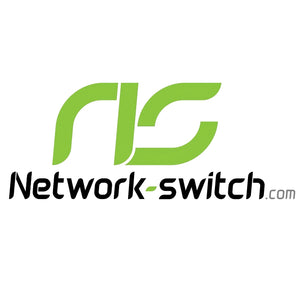Knowing the roles of core, aggregation, and access switches in contemporary network topology becomes essential to create effective and scalable networks.
This article looks at what each such tool does, compares how they differ from each other, and offers suggestions as to what sort of network each of these option might be best suited for in 2025.

Introducing the Network Stars: Core, Aggregation, and Access Switches unveiled
Core Switches
Function: Connection point for all devices on a segment of segment of a network that breaks down and absorbs the data flow between all of the connected devices rather than flooding it to all connected devices.
Key Features
High bandwidth and low delay.
Sophisticated routing options.
Fault Tolerance and High Availability.
Support of Layer 3 features.
Aggregation Switches
Function: Collection of dual-homed access switch data and transporting it to core switches.
Key Features
Medium to high port density.
Support for Layer 2 and some Layer 3 functions.
Quality of Service (QoS) and VLAN.
Support for link aggregation.
Access Switches
Role: To connect network peripherals to the network, from PCs to printers to IP phones.
Key Features
Booster Repeater High Port-density for End Devices.
Power over Ethernet (PoE) supported.
Simple Layer 2 features.
Security features such as port security and ACLs.
Side-by-Side Battle: Core vs. Aggregation vs. Access
| Feature | Core Switches | Aggregation Switches | Access Switches |
| Role | Network backbone | Data consolidation | End-user connectivity |
| Network Layer | Layer 3 | Layer 2/3 | Layer 2 |
| Performance | Very High | High | Moderate |
| Port Density | Medium-High | High | Very High |
| PoE Availability | Rare | Occasionally | Frequently |
| Ideal Environment | Data Centers, Large Orgs | Medium to Large Networks | Offices, Small Businesses |
Your Network, Your Way: Perfect Switches for Any Scenario
Upgrading Your Home Office or SOHO Setup
Choose Smart Access Switches with PoE Smart access switches integrate access and converged networking, provide PoE technology and come in a variety of models with features that balance the functionality offered and the price.
Growing Small and Medium Businesses
Aggregate and connect access switches for users into aggregation switches and within the data center to achieve a high availability, high performance data center infrastructure.
Powering Large Campuses, Enterprises, and More
Do not use just core switches, but use layers of core/aggregation/access switches for best scalability.
Making the Most of DC Performance
Implement high-throughput core switches with advanced redundancy.
Best Switches You Must Discern in 2025
Ultimate Core Switching: Power Your Network Core with Tripp Lite's Leafs
Huawei CloudEngine 16800: Up to 768 400GE Ports and AI Management.
Ruijie RG-N18006-X - Client - module - for RG-NE1600PoEBase MC, mod power, no authorized resellers, power, no authorized resellers, re upgrade, 8, power - 100 Watt.Varied Connectivity The RG-N18006-X supports a variety of connectivity options on the front panel so there is always something to fit your requirements.
Cisco Nexus 9500 Series: They are famous for performance and scalability.
Juniper QFX10000: Deep analytics, high throughput.
Arista 7500R: Ultra-Low Latency – Great for the busiest environments.
Best Aggregation Switches: Optimize Your Network Traffic
Huawei CloudEngine S6750-H: Best of breed connectivity with an AI turbocharged Operations.
Ruijie RG-CS85C Series: For campus and large office deployments.
Cisco Catalyst 9500: High-end ports, strong security.
Juniper EX4650: Rich Features in a Small Footprint The post How to deploy a custom Linux image on a Juniper EX Series switch appeared first on ProNetExpert.com.
Arista 7050X: Flexible with power used efficiently.
Best Access Switches: Smooth In and Out Bound Users
Huawei CloudEngine S5735-L-V2: Good for SMBs, solid PoE.
Ruijie RG-S2915-48GT4MS-L: Cheap traffic and easy to use.
Cisco Catalyst 9300: Stackable, secure and life couldn’t be easier.
Juniper EX3400: Deploy anywhere, with confidence.
Arista 720XP: For use with wireless and IoT-heavy networks.
Final Thoughts
Selecting between core, aggregation, and access switches is not only technical — it’s strategic. Once you know what your network needs, choosing the right type of switch will optimize your operation, improve productivity, and strengthen security.
FAQs
Q1: An access switch can do a core switch job?
A: No—they don’t. CORE switches provide vital routing complexity that ACC switches do not have.
Q2: What if I don't want to use all three types of switches?
A: Maybe not, but it’s certainly true for bigger networks and the layered approach offers advantages in this regard.
Q3: Can I use Layer 3 on an aggregation device?
A: A lot of them do, and they provide good Layer 3 functionality for midcomplexity networks.
Q4: What is the relevance of PoE for access switches?
A: PoE centralises power supplies onto a network, removing the need for individual power supplies for all devices and simplifying cabling.
Q5: What separates aggregation switches from core switches?
Answer: A Explanation: Aggregation aggregates the traffic from the access switches, and protocols such as Virtual Port Channel (VPC) allows for transpacing the Layer 2 data traffic throughout the network, enabling ercoving through the averwark.
Did this article help you or not? Tell us on Facebook and LinkedIn . We’d love to hear from you!




 https://network-switch.com/pages/about-us
https://network-switch.com/pages/about-us


